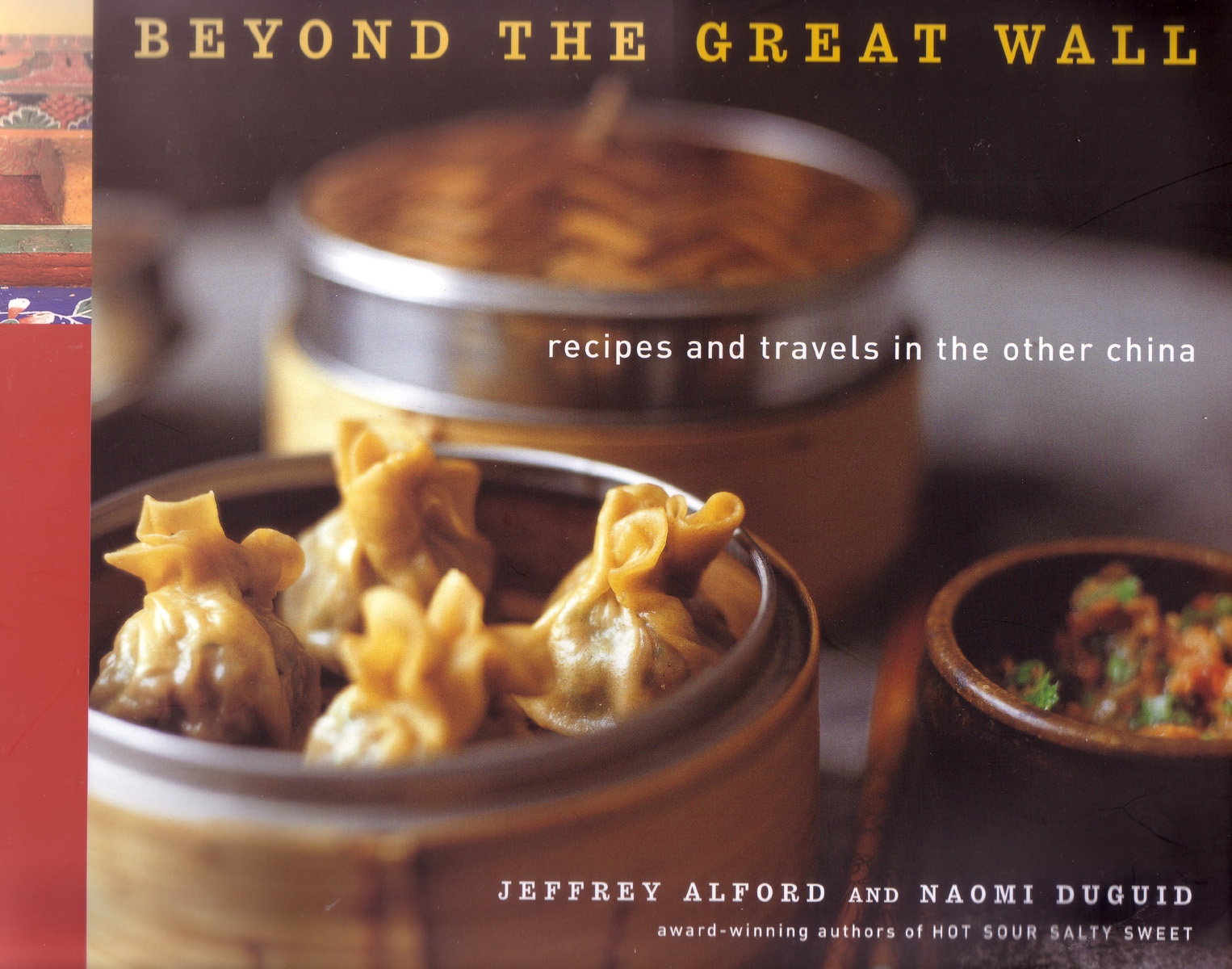
| What is Flavor and Fortune? |
| How do I subscribe? |
| How do I get past issues? |
| How do I advertise? |
| How do I contact the editor? |
Read 13090618 times
Connect me to:
| Home |
| Articles |
| Book reviews |
| Letters to the Editor |
| Newmans News and Notes |
| Recipes |
| Restaurant reviews |
| Article Index (all years, slow) |
| List of Article Years |
| Article Index (2025) |
| Article Index (last 2 years) |
| Things others say |
| Related Links |
| Log In... |
| Authors |
| Categories & Topics |
Beyond The Great Wall
by: Jeffrey and Duiguid, Naomi Alford
New York NY:
Artisan Book 2008, $40.00, Hardbound
ISBN: 978-1-57965-301-9
Reviewed by: Jacqueline M. Newman
Winter Volume: 2008 Issue: 15(4) page(s): 20 and 21
 Subtitled: Recipes and Travel in the Other China, this volume besides its large collection of recipes, speaks of land, people, and the foods of thirteen minority populations. Contrary to other reviewer comments, this book is not about Central Asia. It is about areas and groups of peoples less well-known in the People's Republic of China, peoples and places little known outside the borders of China.
Subtitled: Recipes and Travel in the Other China, this volume besides its large collection of recipes, speaks of land, people, and the foods of thirteen minority populations. Contrary to other reviewer comments, this book is not about Central Asia. It is about areas and groups of peoples less well-known in the People's Republic of China, peoples and places little known outside the borders of China.
Two good maps begin the book; one shows the Western part of China, the other, where these thirteen ethnic nationalities live. The Han make up ninety-two percent of the peoples of China, the authors advise. They speak of the smaller fraction as the other fifty-five recognized minority groups; and they do a fine job of educating those that read about the ones they discuss.
They explain that some populations conquered China at various points including the Mongols, Tibetans, and Manchu; that others were historically independent including the Yi, Miao, and Hani, also, that two have been more assimilated than the others, and these are the Manchu and the Zhuang, while two others remain more distinct, and these are the Tibetans and the Uyghurs. They also explain what the five stars on the flag of China stand for, namely, the five major peoples of this country. These are the Han, Tibetan, Mongol, Manchu, and the Muslims. To clarify minority populations by language, a chart shows the five major language families. These are the Indo-European, Sino-Tibetan, Tai-Kadai, Altaic, and Hmong-Mien; and which ones speak derivatives of each of them.
The book, loaded with gorgeous color photographs of people, places, individual foods, and completed dishes, cites other books worth reading. It provides recipes worthy preparing, too. Use all of this information to help better understand China and its people.
For some years now, we have wanted to make a Laghman Sauce enjoyed in a Kazakh restaurant; thanks to this book, now we can. We wonder how the Chinese use celtuce, now we know and can use this unusual Chinese vegetable found in many Asian markets. Using this book, we now are more knowledgeable, read it and you will, too.
We do have one gripe about some great information in this volume whose chapters are by food category. That has to do with the Table of Contents that lists them and the seven 'Afterwords' groupings. It does not provide the page or pages for easy location of general information about each of them. While this is in the Index, just listing them here would have been an additional asset. Never mind, this book belongs on the bookshelf of every Chinese food lover. Without it, knowing eight percent of that country's population is hopeless. A suggestion to the authors: This book is so phenomenal, please consider writing others about the other forty-two ethnic groups.
| Ginger and Carrot Stir-fry |
|---|
2 Tablespoons peanut oil or lard 1 Tablespoon minced garlic 1/3 pound boneless pork (butt, shoulder, or loin), thinly sliced then cut into 1/2 by one and one half-inch strips 1 and 3/4 cups peeled carrots, cut into matchstick-size pieces 1 cup fresh ginger, peeled and cut into matchstick-size pieces 10 Sichuan peppercorns, lightly crushed or coarsely ground 2 Tablespoons thin soy sauce, or to taste Preparation: 1. Heat wok or fry-pan, the add oil or lard and coat the pan before tossing in the garlic. Stir-fry this for ten seconds, then add pork and the chili peppers; and stir-fry another minute. 2. Add carrots and ginger, stir-fry one minute then add salt and stir-fry another minute. 3. Add one cup water, cover, and boil for three minutes, then remove the lid and let liquid boil for another two minutes before adding Sichuan peppercorns and soy sauce. Stir-fry another minute, then transfer to a shallow bowl, and serve. |

Copyright © 1994-2025 by ISACC, all rights reserved
Address
3 Jefferson Ferry Drive
S. Setauket NY 11720